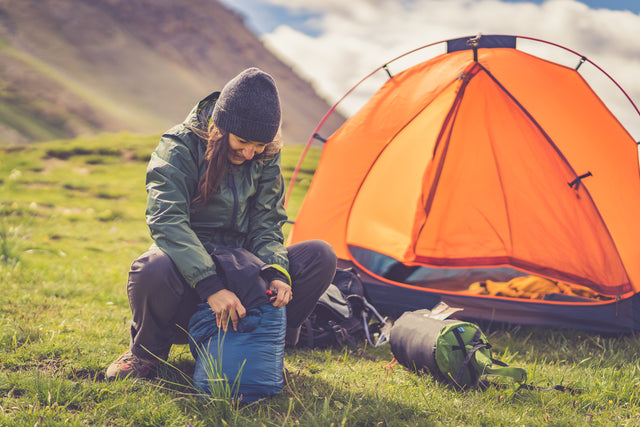Going Lightweight: The Benefits of Ultralight Sleeping Bags for Hiking and Backpacking
When it comes to hiking and backpacking, every gram counts.
The lighter your backpack, the easier it is to cover longer distances and tackle more challenging terrain. For this reason, outdoor enthusiasts often choose lightweight gear, such as ultralight sleeping bags.
Ultralight sleeping bags have become increasingly popular among hikers and backpackers because of their many benefits. Not only do they reduce pack weight, but they also improve mobility and increase comfort during long hikes.
In this article, we'll explore the benefits of using ultralight sleeping bags for hiking and backpacking trips and provide tips for selecting the right one for your needs.
Benefits of Ultralight Sleeping Bags
For individuals who are passionate about outdoor adventures and are determined to reduce the weight of their backpacks, ultralight sleeping bags are an excellent choice. These sleeping bags are crafted from lightweight materials, providing improved flexibility and mobility and ensuring adequate insulation and comfort during your sleep.
Moreover, their compressible nature and versatility make them ideal for various outdoor activities. However, selecting the one that caters to your specific needs is crucial.
Factors to Consider When Selecting a Sleeping Bag
When choosing a sleeping bag, several things must be considered to ensure maximum comfort and performance.
Here are some key considerations to keep in mind:
Temperature rating
Choose a sleeping bag with a temperature rating that matches or exceeds the lowest temperature you expect to face while hiking. Keep in mind personal comfort levels and factors like altitude or wind chill, and adapt your selection accordingly.
Insulation and outer fabrics
Insulation material in your sleeping bag affects warmth, weight, and compressibility.
Down is warm and light but loses insulation when wet. In comparison, synthetic materials are moisture-resistant and retain insulation when damp, but it is heavier and less compressible.
Sleeping bag outer fabrics also range from basic to more technical, water resistant options.
We recommend making your choice based on your priorities and your trip's expected weather.
Shape, size, and closures
Sleeping bags come in different shapes, including mummy, rectangular, and semi-rectangular. Mummy bags are warmer but less spacious, while rectangular bags offer more room to move.
Additionally, some sleeping bags include cowls, or insulated hoods, which may add some weight to the bag but offer a higher degree of warmth for cold weather conditions.
Choose a size that fits well and inspect closures for insulation, durability, and ease of use.
Weight and packability
When hiking and backpacking, choose an ultralight sleeping bag that is warm, comfortable, and easy to compress and pack. Consider its weight in relation to temperature rating and insulation type to make the most of your backpack space.
Additional features
For a comfy sleep, get a bag with draft tubes, collars, and hoods to keep out cold air. Look for pockets, anti-snag zippers, and ventilation for temp control.
Choosing the Right Sleeping Bag for Your Needs
After considering all the above specifications, the most important factor remains that your sleeping bag meets your specific needs and requirements.
What does your next trip have in store for you?
Whether it's an adventurous hiking trip that requires you to pack ultralight or a camping trip in the winter that begs for a warm and comfortable down sleeping bag, Naturehike Africa will have something that suits your needs perfectly.
Take a look at our range of sleeping bags to get ready for your next adventure.



0 Comments
There are no comments for this article. Be the first one to leave a message!